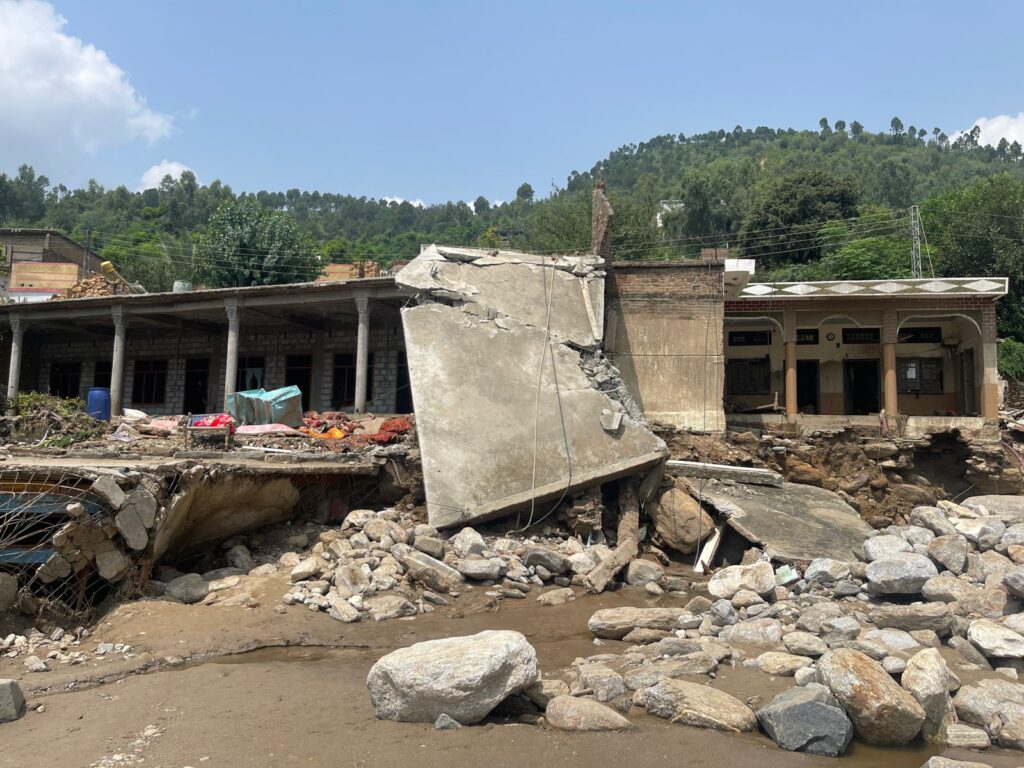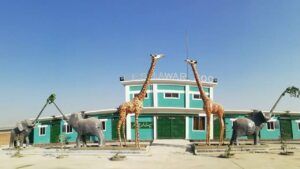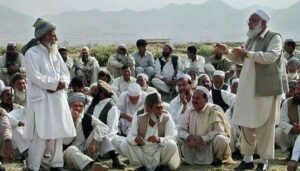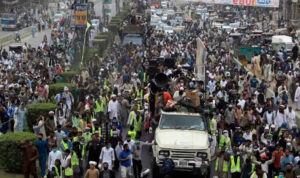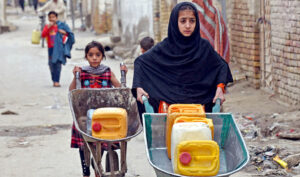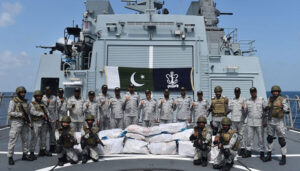PESHAWAR – The morning of 16 August began like any other in Pir Baba, Buner. Rain had been falling steadily since dawn, tapping on rooftops and splashing into gutters.
By 8 a.m., the drizzle had turned into a heavy, insistent downpour. The sky was low and gray; the mountains surrounding the town loomed as silent witnesses to what was coming.
Muhammad Ikram, a resident of Pir Baba, was at home, listening to the rain patter against the windows. Around 8:15 a.m., his cousin burst in. “Water is coming!” he shouted. Ikram felt a sudden jolt of fear. He grabbed his shoes and stepped outside, wading through ankle-deep water that was rising fast.
The market was already a river. Cars bobbed up and down; mud and debris floated past like driftwood. Ikram tried to push his family’s vehicle to safety, but the current was too strong. “We couldn’t move it. It was frightening,” he said. Children, who had gone to school, were at risk. He ran toward the school, water reaching his knees. Inside, students were terrified, clinging to their desks as water seeped in. He guided them out, one by one, his heart racing with every step.
By 8:45 a.m., the streets were almost unrecognizable. Shops were submerged; piles of mud and debris blocked alleys. But Pir Baba had been spared the worst of the destruction. It was Friday, so most shops were closed. Alerts from the police, called by residents in the hills, had prompted shopkeepers to lock up, keeping many safe. Still, the market’s interiors were ruined. “All we saw was mud,” Ikram said. “The financial loss in Pir Baba alone is in the billions.”
At 9 a.m., Ikram set out toward Bashuni village, a few kilometers away, to check on relatives. By the time he arrived, the scale of devastation was overwhelming. Half the village had vanished. Homes that had sheltered generations were reduced to mud and stones. Streets had disappeared under the floodwaters. People wandered aimlessly, calling for missing family members.
Muhammad Imran, a resident of Bashuni, recounted the chaos. “It happened in minutes. One family lost 26 members. More than 200 people died, and many are still missing. People stand where their homes were, but all that remains is mud and stone. Recovering bodies is almost impossible.”
Everywhere, the sounds were haunting: the gurgling and rushing of water, the muffled cries of survivors, and the occasional clash of floating debris. Children clutched to parents, neighbors shouted across mud-choked streets, and elders stood silent, staring at the ruins of homes.
By late morning, the flood had reached surrounding villages—Bati, Qadrnagar, Gokan, and Isar. Each reported dozens of deaths, hundreds injured. Survivors struggled to find food and clean water. Local volunteers, including the Alkhidmat Foundation, moved through the chaos, distributing supplies wherever possible.
The Provincial Disaster Management Authority reports 313 deaths across Khyber Pakhtunkhwa, with 209 in Buner. Locals warn that the actual toll is likely higher, especially in Bashuni, where 184 people are confirmed dead, and many remain unaccounted for.
For Ikram, Imran, and others, the flood was not just water—it was a sudden erasure of daily life. Markets once vibrant with trade were submerged; streets where children walked to school were underwater; homes that had sheltered families for generations were destroyed in minutes. Pir Baba had avoided the worst, but surrounding villages had been nearly obliterated.
By noon, as the water slowly began to recede, survivors waded through mud and debris, searching for relatives, salvaging what little they could, and mourning the lives swept away. The smell of wet earth and rotting vegetation hung heavy in the air. The flood’s imprint would not fade quickly.
For Buner’s residents, the disaster is a confrontation with the fragility of life in the mountains: a reminder that nature can erase entire communities in moments. Rebuilding homes will take years, but repairing lives—grief, loss, and memory—may take a lifetime.

